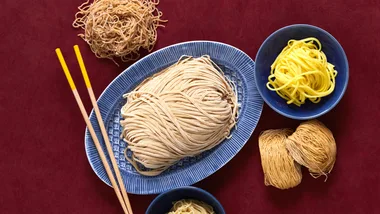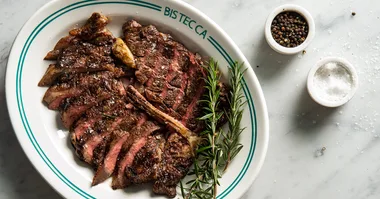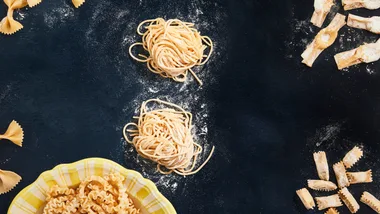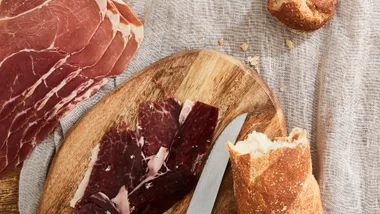It’s difficult to get into the cool-season spirit during the peak of summer, but certain things are worth the mental shift, like booking a family skiing holiday, say, or propagating seeds. And in the month of February, it’s worth thinking about leeks, an easy-to-grow vegetable that you should start propagating now.
Leeks are part of the allium family, which includes onion and garlic. They grow well in a range of climatic conditions, from cool to warm, but the timing of propogation and planting depends, of course, on where you live. In cooler areas, leeks are best grown in spring and throughout summer; in more temperate climates, however, late summer is the best time to propagate the seeds, so you have seedlings ready for the patch come autumn.
Propagate seeds in a seed tray and in a mini greenhouse, in trenches a centimetre deep and five centimetres apart. Keep them out of the harsh summer sun – excessive heat stresses out seedlings, so place them in a bright but cool area indoors during the day, then move them outside during the cool of the night.
When you’re raising seeds, keep the soil mix damp, being careful not to waterlog it or flood the tray; short, sharp waters with a fan spray are best. A mini greenhouse prevents evaporation and locks in moisture.
Germination should take 10 to 14 days, but look at transplanting seedlings when they are around two months old. Rather than setting a date for the move into the patch, however, wait until most of the heat of summer and early autumn passes and find them a permanent home around mid- to late autumn.
When you’re ready to transplant, choose the sunniest position in the garden for your leeks (though they will also tolerate partial shade). They’ll grow in most soil types that are moderately fertile and free-draining. It’s a good idea to integrate a small amount of blood and bone into the soil before planting seedlings – the added phosphorous will help to nourish the plant in the latter stages of development.
Space the seedlings in rows 15 centimetres apart and water them well. Given the weather is likely to still be warm and dry, it’s important to keep watering the seedlings every two days or a little more frequently if they’re in pots.
Wait until the heat has gone out of the soil, around May, and the stems have started to mature before mulching, then use either pea straw, lucerne hay or sugarcane mulch to a depth of three to five centimetres. To increase the length and paleness of the white part of the stems, blanch them by building up the mulch around them to deprive them of sunlight.
Leeks enjoy a growing season of up to nine months, and are also mostly pest-free. You may notice thrip, a microscopic fly, take a liking to your leeks in early spring when the warmth returns, but this is mostly a seasonal pest that will do little damage to the plants.
Once the leeks are big enough, let your appetite dictate when they’re harvested. Mature leeks are happy to be left in the ground for a number of months, particularly in cooler climates. To harvest them, loosen the soil around them with a gardening fork, then pull on the tops of the foliage to free them from the patch. Wash leeks thoroughly before use -there’s likely to be a build-up of soil and grit within their layers because of the blanching. And look out for slugs, too. After that, they’re all yours.
Tip of the month: seed-tray placement
Getting a head start on the growing season by propagating seeds can be tricky when the weather conditions aren’t ideal for the plant species in question. Here’s how to ensure success.
Out of season
When you’re propagating cool-season varieties in the hottest part of the year, they can roast in the sun. Similarly, in the cool and unpredictable early spring, warm-season plants may get frostbitten. Two things are crucial: creating an incubated environmentwith a mini greenhouse, and choosing the right place to position them during the day and night.
Room to grow
When you propagate warm-season plants in spring, place your mini greenhouse outside during the day to soak up the sun and indoors at night, when the mercury plummets. If you’re starting cool-season varieties in late summer, do the opposite: indoors in a cool, bright area during the day, and outside at night. Then, when conditions stabilise, it’s time to transplant them into the patch.










